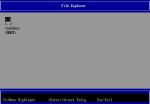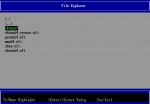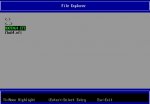Ok, I have found the cause for not seeing the filesystem in the UEFI Boot Manager file selection. Unless you use VirtIO for your disk, the UEFI code can't read the partition table or that's what I think it's happening.
You don't need to recreate your VM but I have reinstalled mine so I can't tell if the fix will work for an already installed OS. The steps are to boot from the ISO image, do not let the installer use defaults for the disk layout, customize it. Delete the existing partitions from the bottom minus button, clear them all. Select from the drop-down standard partition and click the link at the top to bring back the layout. Make sure in the right hand pane that you select ext4 for your filesystems except the EFI one which is a basic vfat.
Install the OS, take out the CD-ROM device, boot. It will fail, at the shell> prompt type exit and navigate to the boot manager. You should see the local disk and navigate to EFI/BOOT/centos/grubx64.efi and press enter. Now you should see the Centos 7 boot loader. Boot the system, go to /boot/efi/EFI and copy grubx64.efi from the centos directory to BOOT. Now your VM will be able to boot everytime. If you update the system repeat the copy if the grubx64.efi differs between the /boot/efi/EFI/BOOT and /boot/efi/EFI/centos directories.
I apologize for my previous post but this wasted half of my night instead of playing Surviving Mars :D



